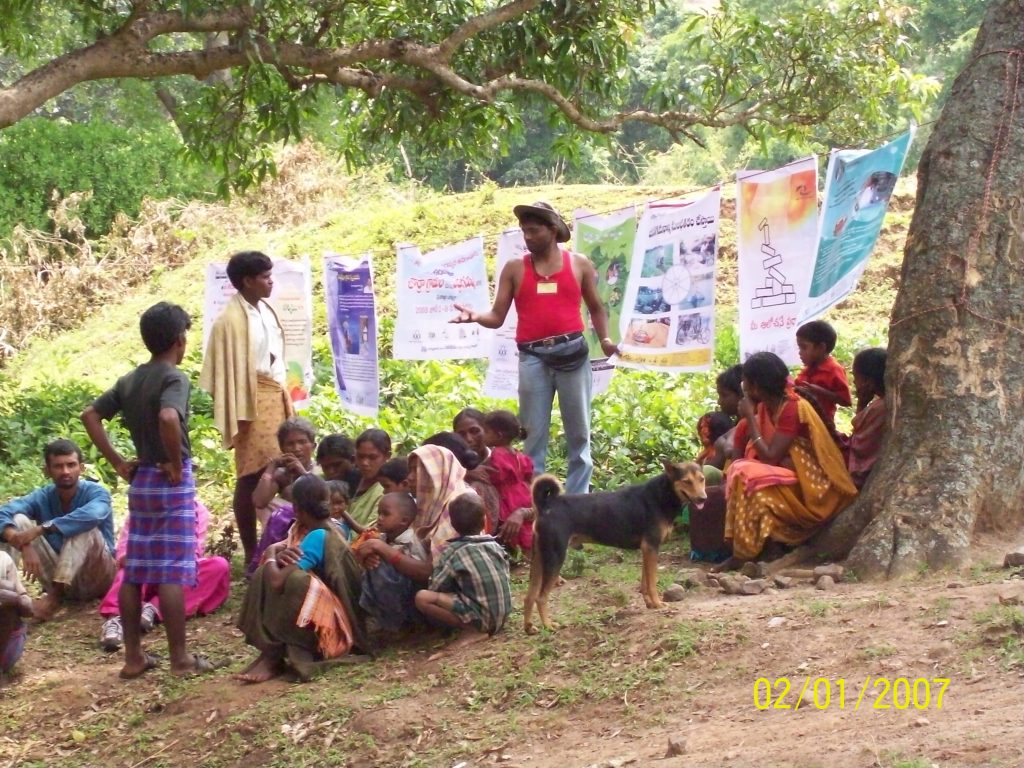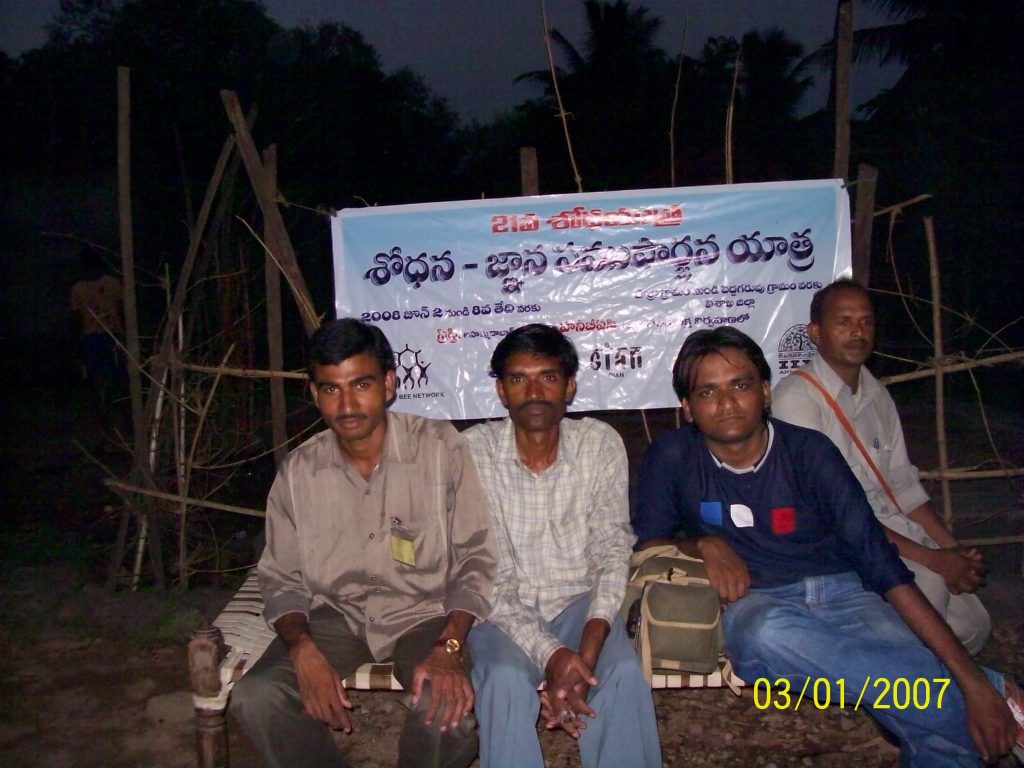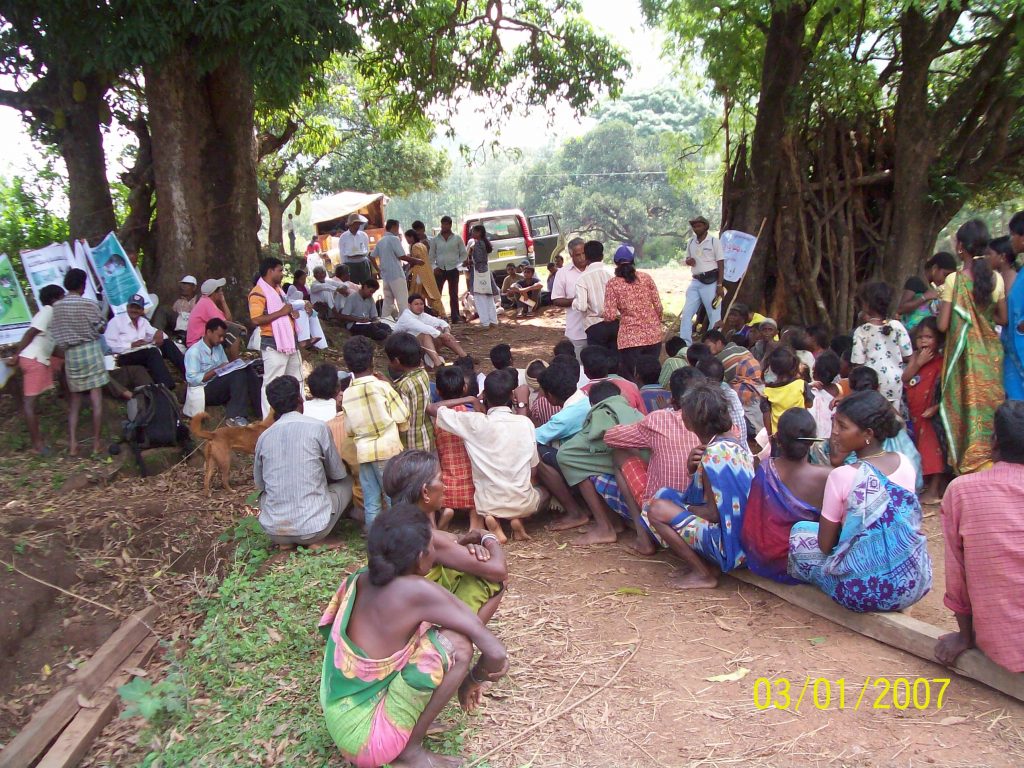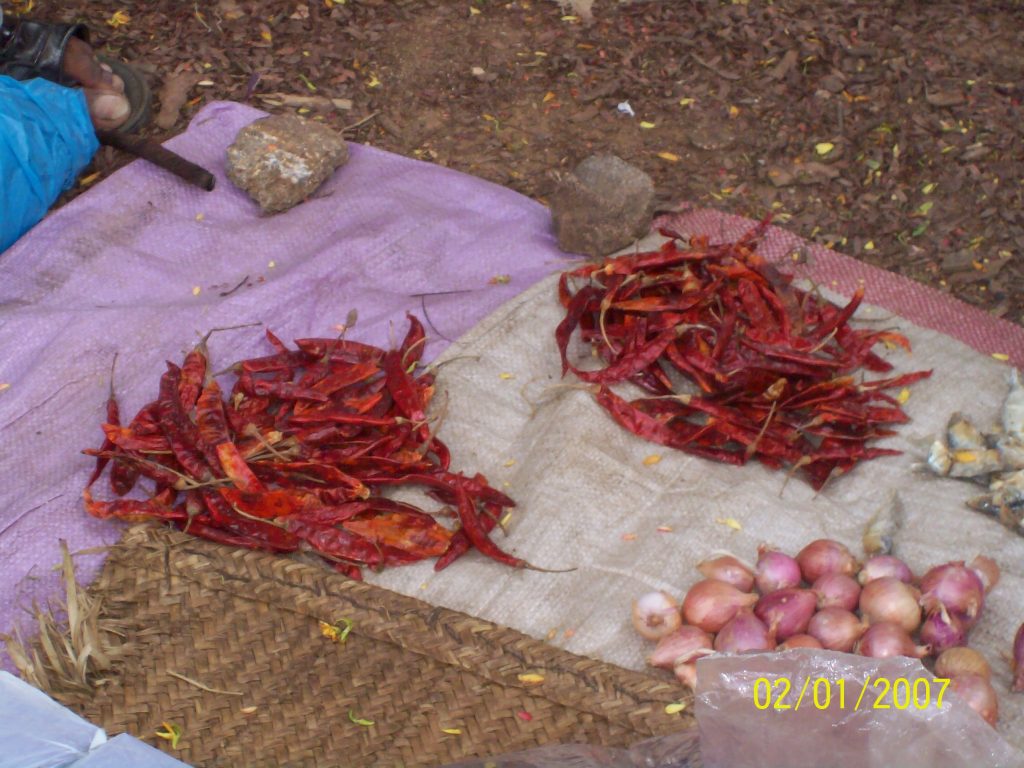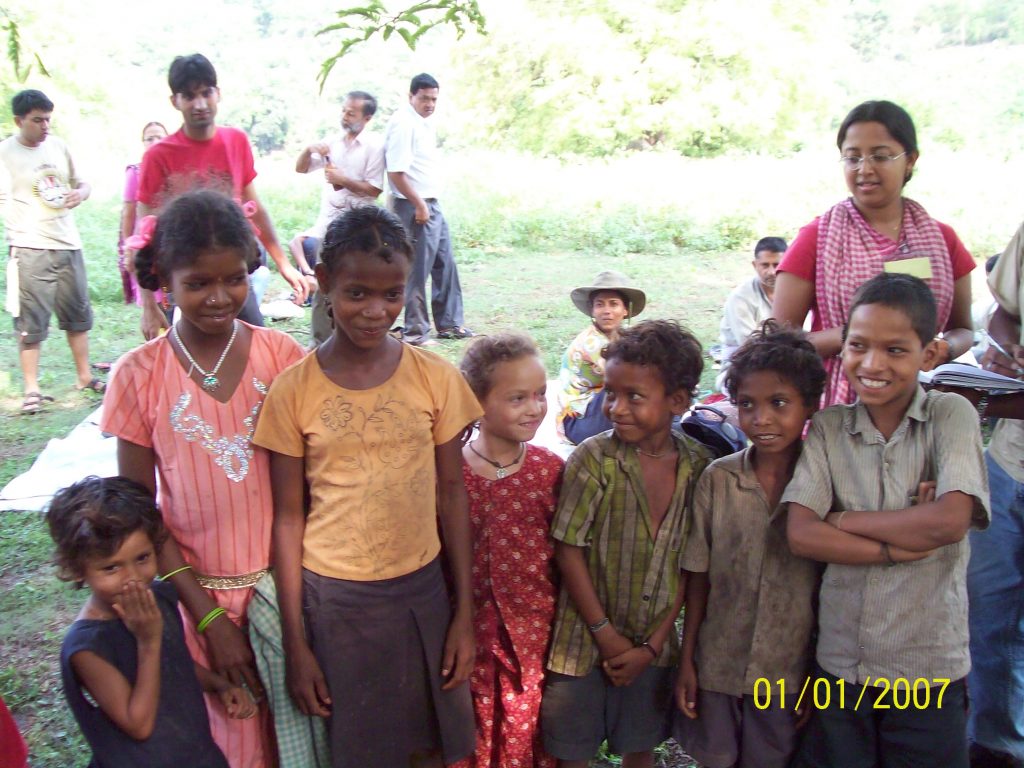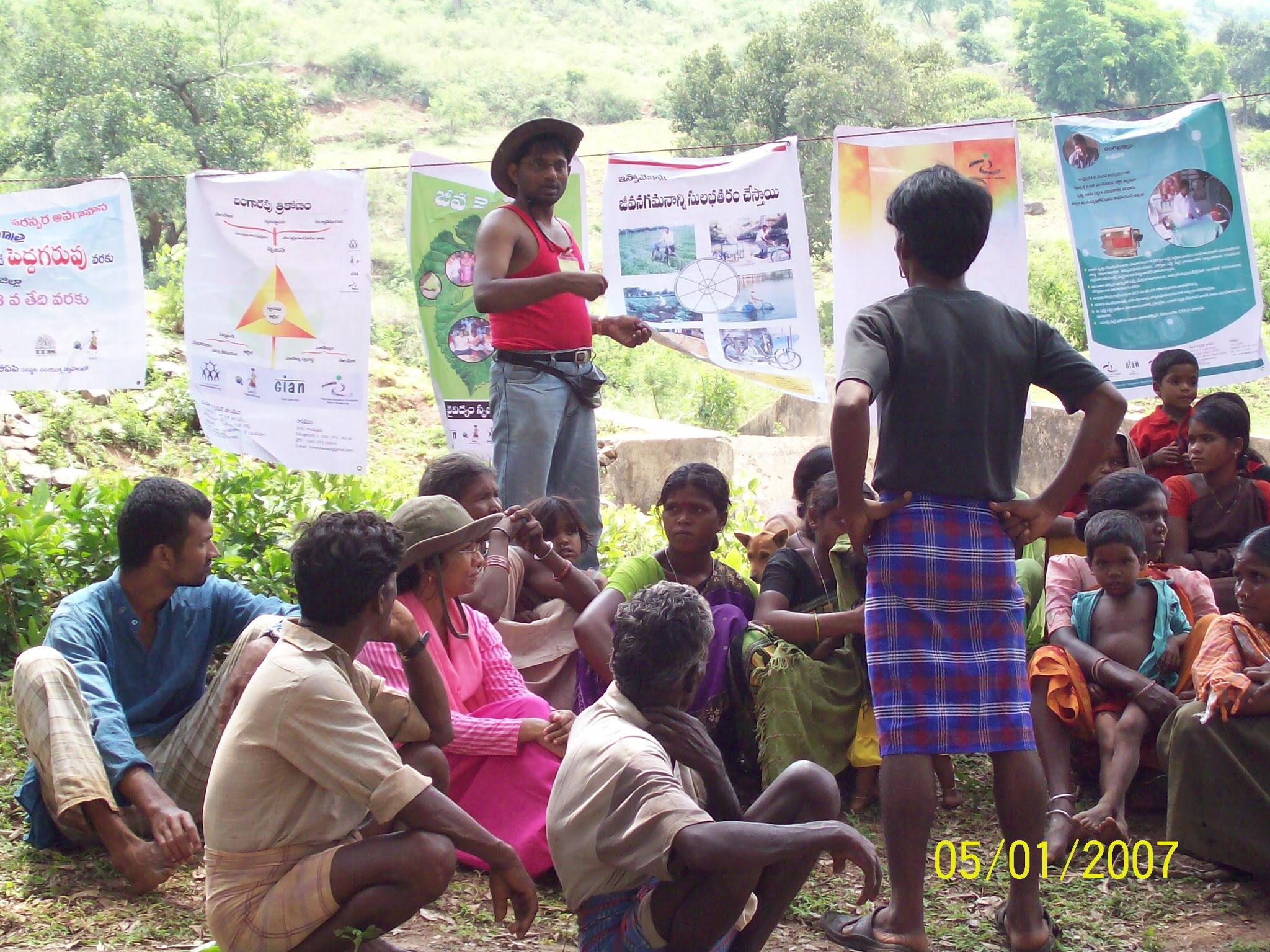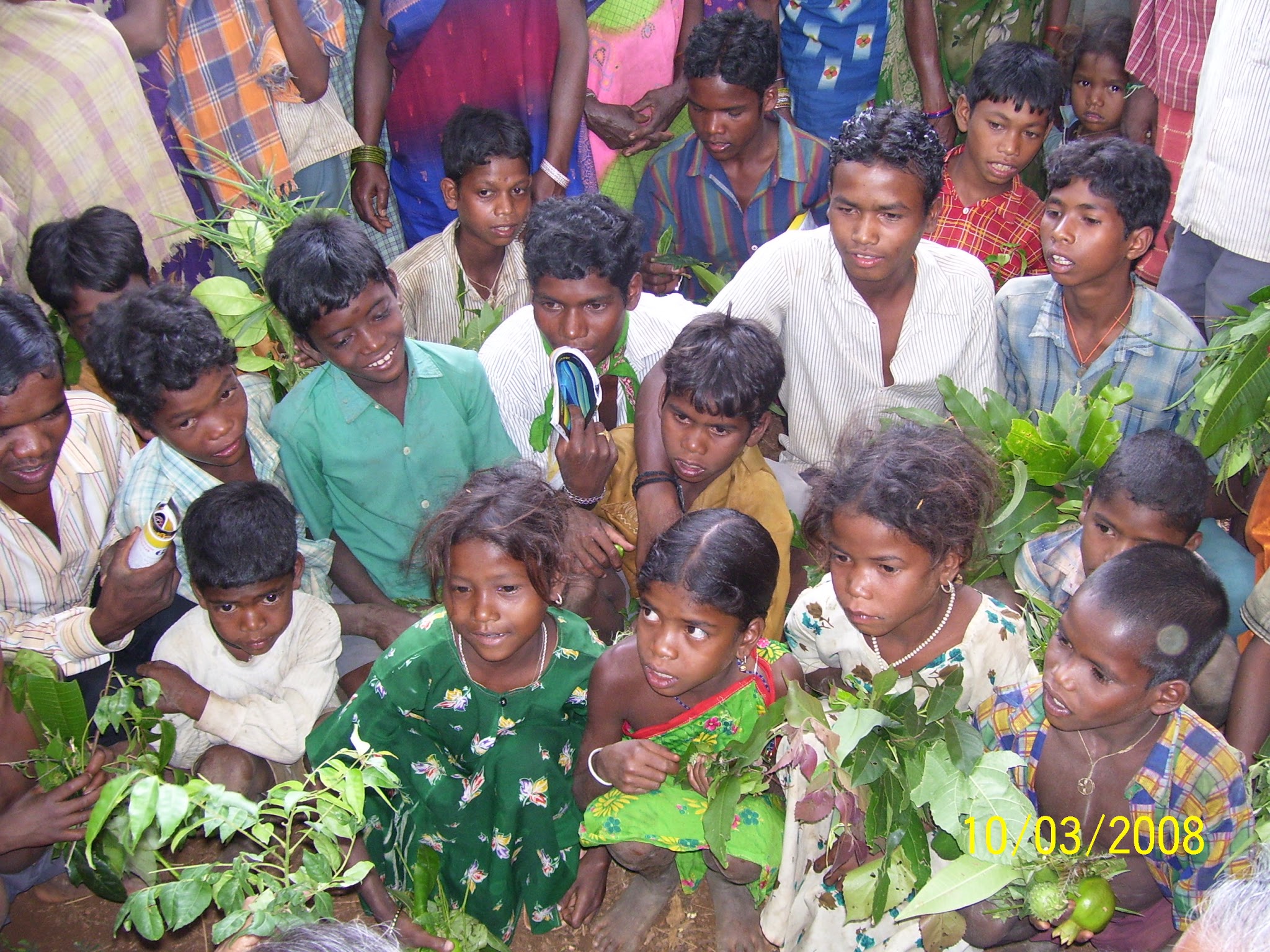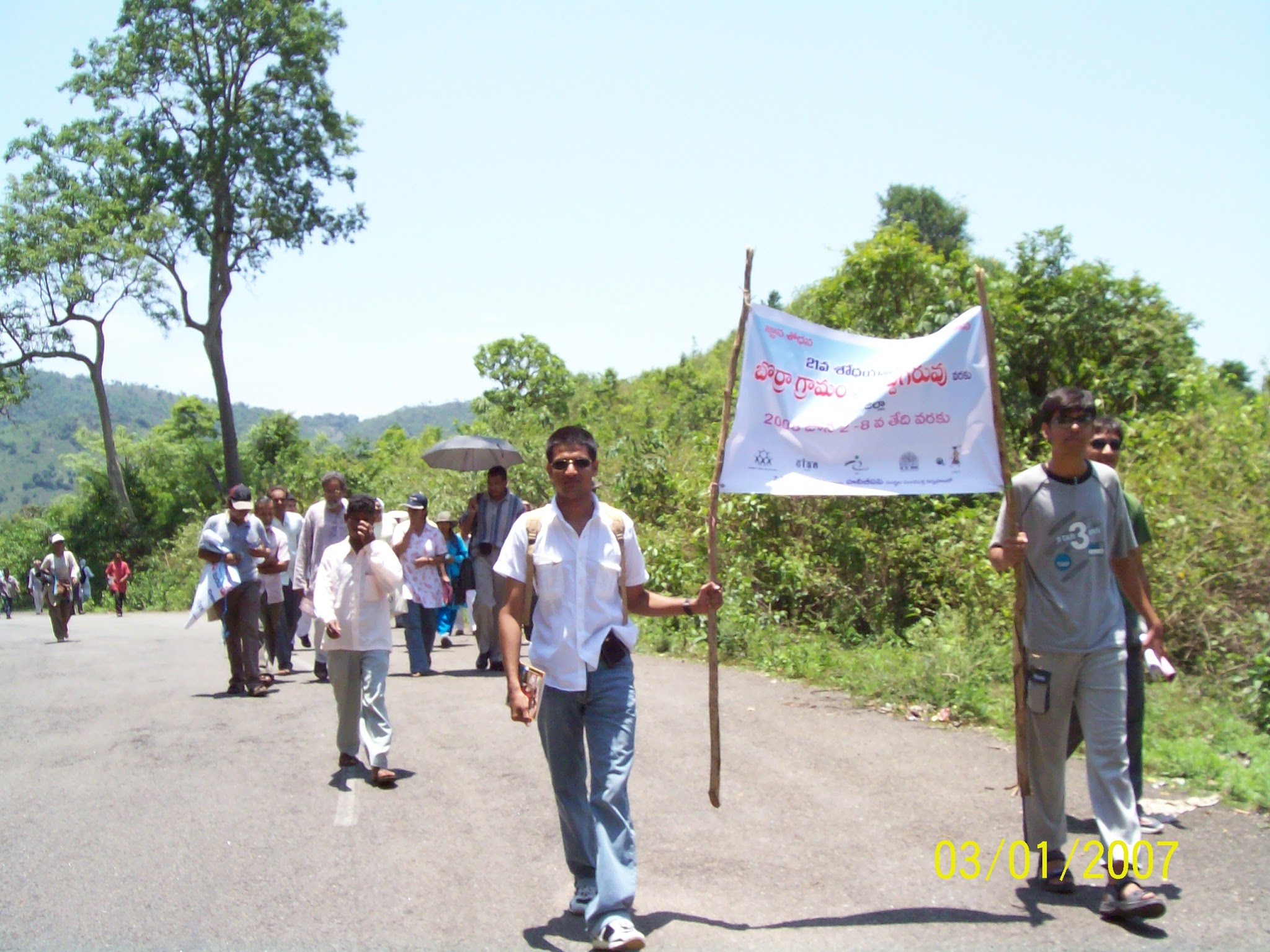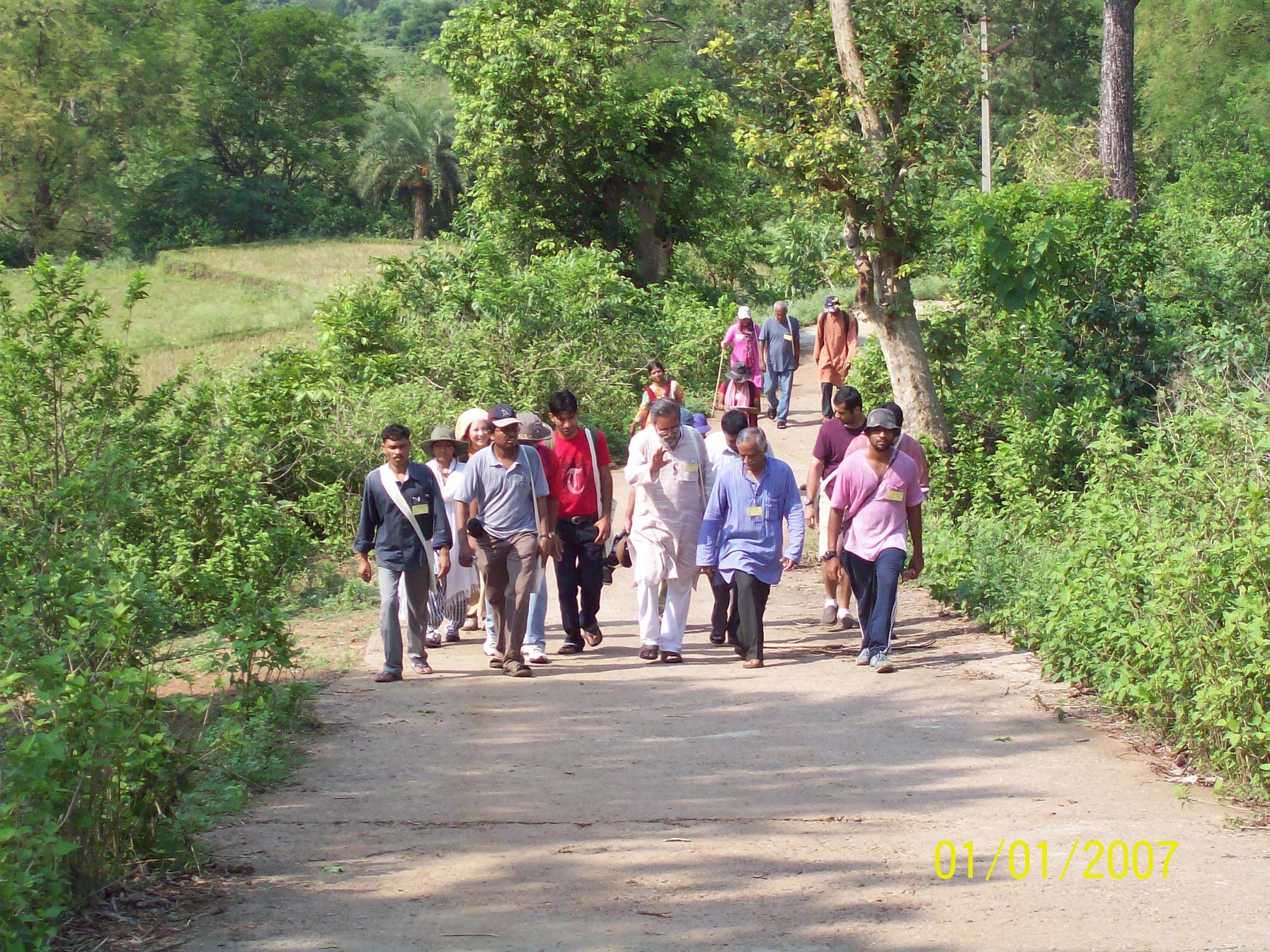Get Next Shodhyatra Update:
Phone:
079-27913293, 27912792
Email:
shodhyatra@sristi.org
21ST SHODHYATRA - BORA TO PEDAGURUV (ANDHRA PRADESH)
(June 2 – 8, 2008)
In Araku Valley, near Visakhapatnam, a region affected by extremist violence and extreme deprivation, with history of tribal unrest and also a tourist destination, the 21st Shodhyatra took place from 2nd to 8th June 2008. This region, which is about 700 km away from the state capital Hyderabad, is rich in biodiversity. The tribal area still lacks in the basic amenities like education, health, transportation and communication. It is thronged by the tourists, looking for peace and plenty in a hill station. The Shodhyatris, walked through the interior villages, for eight days, not only to find just underdevelopment and unrest, but also creativity and some innovations.
Shodhyatra was organized by Honey Bee AP with the support from SRISTI, NIF, TERDS, Samata, Sanjivini, Adivasi Mitra, etc.
When Jyothi does not want to let heat energy from her traditional wooden fuel based hearth go waste, she develops a three-tier energy harvesting system. Near jungle, with enough wood around, why does an innovation emerge like this? She has a shelf above the fire made of bamboo strips. The paddy is kept on the shelf for drying and heating. This makes it easier to thrash them. Less drudgery and faster output are the bonus along with harnessing the energy. The third tier is a bag of seeds, smoked and mildly heated everyday so that pests are kept away. Have we come across such a three tier system of energy harnessing anywhere else in the country? Has any R&D institution done research to find out whether drying the paddy with panicles on fire would make it easier to thrash? May be the desire to be frugal is imperative among several communities, it is not a choice.
Most people who have not learnt or seen this innovation, pound the paddy grains in the holes or pits made in the stone on the ground: a technique that must have evolved thousands of years ago.
There was not a single paddy thrasher, even a pedal driven one that we had seen in Shodhyatra in Purulia, West Bengal. Why should State be so indifferent to the genuine needs of the poor people in Araku Valley?
There was tremendous richness of knowledge about biodiversity among the local communities. About 70 people from different parts of the country walked together to learn about this richness for around 100 km from Borra village in Araku valley, to Titingvalsa in the district Visakhapatnam over six days. There were farmers, innovators, students, professionals and NGO volunteers from USA besides, a television crew from a Franco-German channel.
Araku valley is rich in natural and mineral resources. There are trees of jack fruit, custard apple, and tamarind. Shodhyatris saw single jack fruit trees with 100-150 fruits. There were small plantations of curry leaves, green tea, adusa, and coffee. These contribute only a little to meet livelihood needs. Paddy, ragi (finger millet), corn and turmeric are the main agricultural products. The tribal use the water of the waterfalls for irrigation. Thousand years old design of ploughs are still in use. People here do not use the milk of the cow and goats, leaving it for the calves. They use the bullock carts for agriculture, without using ropes to mind cattle while ploughing.
A WALKING LIBRARY
When we honored Dwarapudi Appalanaidu in Borra village, local community also appreciated that someone who had cared for their health by collecting herbs from jungles around, at least got recognized. It seemed that creativity of ancient cultures expressed in 50000 year old caves near the point where the river Gomukhi originates, got connected with the contemporary communities through such healers. A Village Knowledge Register was given to the Village Chief to catalogue local knowledge. Vani Rupela, a Shodhyatri from Hyderabad was intrigued by the Registers concept. So far the tribal struggles had been waged around Jal (water), Jungle (forest) and Jameen (land). The Honey Bee Network thought it necessary to add the fourth dimension that is Jankari (Knowledge). Struggle for the right to knowledge, lies at the root of creating Village Knowledge Register. This could also be a means for erecting knowledge checkdam or gyan ka bandh to stem the erosion of local knowledge.
A centenarian couple viz., Sara Sampa and Sara Sundar, was felicitated in Sisaguda village. Sirgam Raghu, a herbal healer was honored in Mulyaguda village. Raghu is carrying the tradition of healing people using the herbs available in the hills around. His source of knowledge is a book of leaves (tala patra) on which complete details of each likely disease in that area, its symptoms, treatment, medicine and its doses were written in Oriya. He proudly showed us around hundred such books in his home. When asked how he plans to pass on this knowledge to the next generation, he said he had no idea as his children are not keen to continue his profession.
We suggested him to teach anyone in the village, boy or girl, who wants to carry on the tradition of herbal healing. While passing through this village, a different design of a wooden flour mill was spotted with slight conical base to grind the local millet grains with very low pressure.
Most Shodhyatris had not seen such a grinding mill ever. The multimedia database of innovations was shown in Medarparthi village after devouring a very interesting range of recipes made by local women folk as a part of recipe competition. Jack fruit found abundantly in the region, was a common ingredient. Sugar Gangamma had prepared a sweet and sour curry from the seed and the pith of jack fruit which everybody considered as the most distinctive recipe, winning her a prize. Vantala Budhu, a herbal healer was recognized for sharing his knowledge with the local communities. He had been to Nagaland and learnt from north eastern traditional knowledge systems as well.
While going to Peddabayulu, Shodhyatris observed a rich diversity and honored Boyina Sanyasi, a traditional knowledge holder in the village. This is also the village where Jyothi had developed her three-tier energy harnessing system.
In Boddapudu village, a biodiversity competition was organized in which Shodhyatris also participated. Everybody was supposed to bring leaves of plants and narrate their names and uses. As expected, village children surpassed the knowledge base of Shodhyatris, particularly, the urban ones. The children and the local healers were recognized for their distinctive knowledge. We saw a practice of branding the skin at selected places on stomach which is believed to make children immune, from many diseases.
NO POVERTY OF IDEAS
At Valasi, the Shodhyatris were welcomed by impromptu recital of songs. Konda Babu, a young boy sang a Telugu song about the importance of Science and Technology. Another boy sang about the paradox in society, about how the present education and technology can even ruin us. Both songs had been composed by a teacher of the village, who could not be present for the meeting. He was doing his bit to spread awareness of science and technology and again teaching the young children not to be swayed by it.
An idea competition for students brought forth some bright ideas like water-operated bike, on-demand memory system, manual washing machine, and fan operated with walkman motor, etc. A herbal healer named Sirgam Sanyasi Naidu and five students with distinctive ideas were awarded. At Rallavalasa after the meeting, there was a recipe contest.
STRUGGLE WITHOUT AND WITHIN
The morning of June 4, started with brainstorming session for the Shodhyatris. Humbled by the tough terrain, uncomfortable and pathetic conditions, they came up with novel ideas like Idea wall in the metro cities, light weight kit for Shodhyatra, a solution which can clean the person in single dip while bathing to save the water, sliding platform in the vehicle for physically challenged and folding bag. Before we left Rallavalasa, we were told by the villagers that they also had Naxalites as their guests in the night who stayed few hundred yards away from the place where Shodhyatris slept.
While the meeting was going on, a man wielding a stick suddenly started screaming at us. He told us that there is only one stop in life, that goes to God, and that we had no right to stop in their village, on their land, near their trees, and their hills. He appeared to be drunk, but a further analysis proved that he was disturbed. His name was Boyina Rama Rao. He had been a very valiant worker of Samata during their protest against a road in the region for mining purposes. But, Boyina Rama Rao lost his balance reportedly due to torture and other hardships. An incomplete road stood as a testimony to the struggle of local people.
Two students who had represented the district at state level in volley ball competition were felicitated in Majjivalasa village. Joining Dhimsa dance with villagers in Burja village after dinner, to the din of special drums played by villagers, helped Shodhyatris get over their fatigue.
From Burja the journey proceeded downhill. Philip Brachet and Elsa Mager, the Franco-German TV channel crew commented that the Shodhyatris seemed like a sight of pilgrims visiting knowledge temples residing at grassroots. Kiran Bhai, retired government professional, Ram Bhai, teacher at school for deaf, Alag Natrajan, NRI now settled in Delhi, Kameshwari, faculty at GB Pant Univ, Ramakrishna, software engineer, Vinit and Uday who had come from USA, were few of the Shodhyatris pursuing their individual as well as collective search along with scores of farmers and artisans.
After a three km walk, the yatris reached Barringbandar. The elders also got involved in the biodiversity competition held for children to help in naming the plants. Two hour stop in the village witnessed a unique open sharing of knowledge experience by the Shodhyatris and the villagers. The villagers informed that previously the rice grains used to be big and the plants small. But now it was the opposite. They also informed that once there used to be black rice grains.
After stopping for a while at Kindangiguda, Madagada and Chompi, Yatris tasted a fermented dish called ambali made out of ragi that looked like cheese in Kothavalasa village. Children also shared their knowledge of local diversity. Shodhyatris also saw a rope swing tied to the roof of cow shelter which enables the children on swing to live closely with cows and may be talk to them.
The next village Kodipunjulavalasa, changed the way we looked at the relationship between diversity and community learning processes. After visiting a check dam, Yatris were sitting on the steps of newly built community meeting place. During a biodiversity competition in the village all other children brought mostly common plants and that too numbering five to ten. But Jyothi (8), surprised everybody (Cover story of HB 19(2)2008). She had brought 25 different types of plants and narrated their names and uses. On being asked to call her parents, she just cried for her dead mother and apathetic father. Brought up by her grandparents, her soul mates must have been those plants.
The villagers also played volleyball with Shodhyatris. Local community in the village Sirgam shared the knowledge about a fruit called Jampra (Bixa orellana L) used for making natural dyes and edible colour out of it. The fruits were purchased at very low rates but if value was added with in the village, there could be better gains for the villagers.
Due to the apathy of the Govt towards the conditions of tribals, living in Araku valley, Peoples War Group (PWG) and left extremist (Naxalite) organizations had become active in mainly three neighbouring districts encompassing tribal community habitats. On 5th June, 2008 in a police encounter, commander of Korukonda Force of PWG was killed. Randev aged 28 years was considered by local communities, a martyr. We got the message about the encounter on June 5th night and were also informed about the impending two days bundh following the encounter, which might lock us up in the valley. We were advised to move out of the Araku valley before 7th June night. We had to cut short the Yatra by a day due to this development.
Shodhyatris used this opportunity to learn from Samatas experience. Mrs Bhanu from Samata informed that they had filed a court case against the leasing of calcite mines in Rallavalasa, Karakavalasa and Nimmalapadu of Anantagiri mandal to a large private company. And thus, we learned, what appeared in the media later, a majority bench of the Supreme Court had given a historic judgment in 1997 against the leasing of mines in tribal areas to private companies under Fifth Schedule of the Constitution (also called locally as Samata judgment). The judgment had resulted in the annulling of all mining leases that were granted in Visakhapatnam, agency till then. (The Hindu, Jul 08, 2008).
The court had further ruled that, only cooperative societies solely run by the Scheduled Tribes could mine in such areas, subject to compliance with the Forest Conservation Act and the Forest Protection Act. The Andhra Pradesh government was directed to stop all private mining within the Scheduled Areas, Front-line (21(19)2004).
But the deprivation has persisted; the region seems to have been punished for not falling in line. Efforts were on to amend the laws to circumvent the Samata judgment. How would the tribal keep the low productive land and yet not fall into debt traps is another dilemma. Will they conserve diversity by remaining poor? Should not value addition in local knowledge thus become most urgent priority? Samatas slogan of Heath of Hills is wealth of Plains couldn’t have been truer.
FLICKR GALLERY

